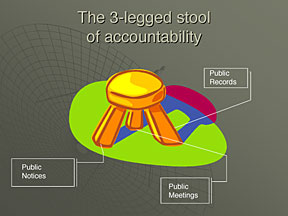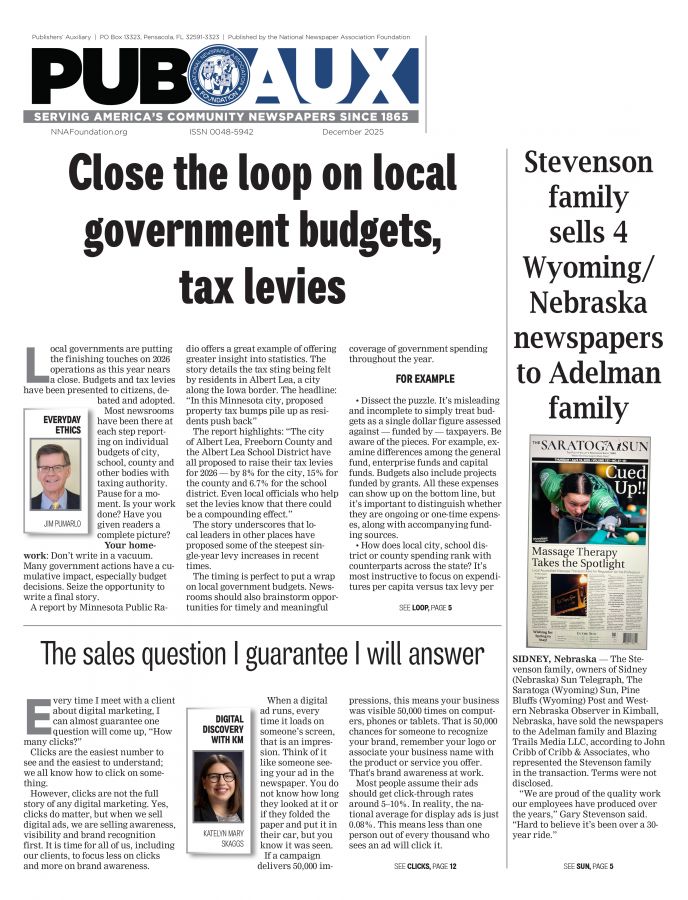Public notice reporting tips
Public Notice Resource Center & NNA


Learning from the master: How Jim Lockwood weaves award-winning journalism out of public notices
Public notice journalism is an art, according to Jim Lockwood, award-winning city government reporter for the Scranton Times-Tribune (read here).
But he promises that with practice, any reporter can become an expert in ferreting out important news articles from public notice advertising and keep readers in the know.
Lockwood’s three Rs of public notice journalism
- Read them: They are right under your nose, in your own newspaper, and there is really no excuse not to read them.
- Report on them: You will see something in public notices that will spark your curiosity. When that happens, dig a little deeper and report on what you find.
- Reference them: Don’t be afraid to attribute information in your article to the public notice you are reporting on. Just treat it like any other source and write, “according to a public notice published in this newspaper.” This type of attribution adds transparency to your reporting and helps readers understand the importance of publishing notices in newspapers.
MORE TIPS
Be an early bird: Lockwood advises daily newspaper reporters to read their paper’s public notices first thing in the morning. Sometimes they announce meetings, hearings and other events and initiatives taking place that same day. “Don’t wait until 5 p.m. or you might miss something important,” he said. Weekly newspaper reporters shouldn’t dally, either.
Penetrate the legalese: Often, lawyers write public notices using legal terms, and they are hard for readers to comprehend. “The more you read them, the better you’ll get at understanding them,” Lockwood says. “You’ll learn the patterns, and you will be able to get to the point quicker.” Sometimes the “nut graph” that tells you what the notice is really about will be the third line from the bottom. “They always bury the lede.”
Exercise your curiosity: Sometimes, getting good public notice stories comes from old-fashioned shoe–leather reporting. Lockwood recalls seeing a notice advertising a hearing on condemned and abandoned property, which consisted of two boats and a trailer. It listed the date and time for the sale at the county courthouse and nothing else. His curiosity piqued, he dug a little deeper and discovered the notice was a poorly worded announcement that someone had a tax lien and had been required to liquidate their boat and trailer. “This is an example of bare bones info in some notices, giving no hint of why or who ran this,” he says. While this public notice did not result in a story, Lockwood found it worth digging into.
Where to look for public notices: Your own newspaper is a good source for public notice advertising, but if your paper is not the newspaper of record in your town or if other newspapers in your city or county run notices, then turn to them. Often, public notices are required to be posted at the courthouse or town hall and you can read them there, as well. Another resource is the statewide public notice website operated by your state newspaper association, which you can access from this page.
“When you read public notices, ask yourself ‘what is going on here? What is the real story?’” Lockwood says. “Keep pulling away layers, like an onion, and keep those layers stored away for reference.”
Some notices seem insignificant, but one thing might lead to another until you have an important story that can be spun off into columns, editorials and even award-winning journalism packages.










